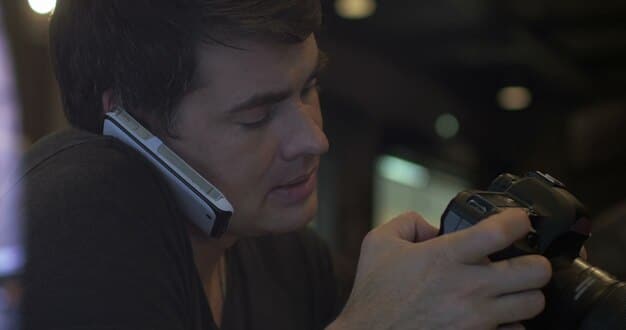Master Micro-Budget Films: US Filmmaking Tips on a Shoestring

Mastering micro-budget filmmaking in the US involves resourceful planning, creative problem-solving, and leveraging free or low-cost resources to produce high-quality short films despite financial constraints.
Embarking on a filmmaking journey doesn’t always require deep pockets; in fact, some of the most compelling stories are brought to life with limited resources. Mastering micro-budget filmmaking in the U.S. means embracing creativity, resourcefulness, and strategic planning to produce high-quality short films on a shoestring.
Understanding the Micro-Budget Landscape in US Filmmaking
The micro-budget film scene in the U.S. is vibrant and filled with opportunities for aspiring filmmakers. It’s a world where innovation trumps capital, and a compelling story can shine regardless of the budget size. This section delves into what constitutes a micro-budget film and why this approach can be particularly beneficial for emerging filmmakers.
Defining a Micro-Budget Film
A micro-budget film is generally defined as a project made with a very limited amount of money. While definitions vary, in the U.S. it typically refers to films made for under $100,000, and often much less.
Advantages of Micro-Budget Filmmaking
Micro-budget filmmaking offers several advantages, especially for those starting their careers, these include:
- Opportunity to learn every aspect of filmmaking from pre-production to distribution.
- Complete creative control over the project.
- Lower financial risk, making it easier to secure funding or self-fund.
- A great way to build a portfolio and gain recognition in the industry.
Micro-budget filmmaking in the US is not just about saving money; it’s about making smart choices and utilizing resources effectively to bring your vision to life.

Pre-Production Essentials for a Shoestring Budget
Effective pre-production is crucial when operating on a micro-budget. Proper planning can save time, money, and stress during the actual shoot. This section explores essential pre-production steps that are tailored for filmmakers working with limited resources.
Script Development and Storyboarding
A well-developed script is the backbone of any successful film. Spend ample time refining your story, and create a detailed storyboard to visualize each scene. This helps minimize surprises and ensures that you maximize your shooting time efficiently.
Location Scouting and Securing Permits
Finding the right location can significantly enhance the film’s aesthetic. Look for free or low-cost locations such as parks, public spaces, or negotiate with local businesses. Don’t forget to secure the necessary permits to avoid legal issues during filming. Sometimes, asking a friend or family can allow you to use their place for free or at lower costs.
Casting and Crew Recruitment
Talented actors and a dedicated crew are invaluable assets. Consider casting emerging actors or offering profit-sharing agreements to attract talent. Network with film students and local film communities to find passionate crew members who are willing to contribute their skills for a reasonable rate or for the experience.
Careful pre-production is where you lay the groundwork for a successful micro-budget film. Attention to these details will make the production process smoother and more cost-effective.
Creative Production Techniques for Limited Resources
During production, creativity and resourcefulness are your best friends. This section provides practical techniques for maximizing your limited resources and achieving professional results.
Utilizing Natural and Available Light
Lighting can dramatically impact the look and feel of your film. Whenever possible, use natural light or available light sources. Reflectors and diffusers are inexpensive tools that can help you shape and control light, giving your shots a polished look.
DIY Equipment and Gear Hacks
Expensive equipment is not always necessary. Get creative with DIY solutions. Build your own camera rig, use household items as props, and explore cost-effective alternatives to achieve desired effects.
Sound Recording on a Budget
Good sound is essential for any film. Invest in a decent microphone and a portable recorder. Pay close attention to ambient noise and find quiet locations for recording dialogue. If budget allows it, you may hire a sound technician, or ask a friend who study in the field of sound.

By embracing creative solutions and thinking outside the box, you can overcome the limitations of a small budget and produce a visually and aurally appealing film.
Post-Production Strategies for Micro-Budget Films
Post-production is where your raw footage transforms into a refined cinematic product. This section highlights strategies for efficient and cost-effective post-production.
Editing on a Budget
Familiarize yourself with affordable editing software, such as DaVinci Resolve, which offers a free version with professional-grade features. Learn the basics of editing, pacing, and storytelling to create a compelling final product.
Sound Design and Mixing
Sound design is an integral part of post-production. Use royalty-free sound effects libraries or create your own soundscapes using simple recording equipment
Color Correction and Grading
Color correction and grading can enhance the visual appeal of your film, and help you create a consistent visual style. Learn to use color grading tools to improve the overall look and feel of your project.
- Free editing software options, like DaVinci Resolve, can provide robust tools for a professional finish without the costs.
- DIY sound design using royalty-free libraries or original recordings.
- Color grading to create a unique visual style.
Skillful post-production can elevate your micro-budget film, ensuring it looks and sounds professional, regardless of the financial constraints.
Legal and Ethical Considerations in Low-Budget Filmmaking
Navigating the legal and ethical aspects of filmmaking is important, regardless of your budget. This section provides some guidance on how to ensure your micro-budget film complies with relevant regulations.
Copyright and Licensing
Be mindful of copyright laws when using music, footage, or other copyrighted material. Obtain the necessary licenses or permissions to avoid infringement issues. Consider using creative commons music or original compositions to save on licensing fees.
Talent Releases and Agreements
Ensure that all actors and crew members sign talent releases and agreements that clearly outline their roles, compensation, and rights. This protects both you and your collaborators and minimizes the risk of disputes in the future.
Insurance and Liability
Even on a micro-budget, consider obtaining basic insurance coverage to protect against accidents, injuries, or damages that may occur during filming. Explore affordable insurance options tailored for independent filmmakers.
Adhering to legal and ethical standards can protect your project and career, fostering trust and professionalism within the film industry.
Distribution and Marketing Strategies for Short Films
Once your film is complete, the next step is to share it with the world. This section explores effective distribution and marketing strategies tailored for short films.
Film Festivals and Competitions
Submitting your film to festivals and competitions is a great way to gain exposure, recognition, and potential awards. Research festivals that align with your film’s genre and target audience, and carefully review their submission guidelines.
Online Platforms and Social Media
Leverage online platforms such as YouTube, Vimeo, and social media to showcase your film and reach a wider audience. Create engaging content, build a following, and participate in online film communities to promote your work.
Networking and Collaboration
Attend industry events, connect with other filmmakers, and collaborate on future projects. Networking can open doors to new opportunities.
- Film festivals provide opportunities for recognition and distribution.
- Online platforms extend your reach to global audiences.
- Networking with industry peers can lead to future collaborations.
Strategic distribution and marketing can amplify the impact of your short film and propel your filmmaking career forward.
| Key Point | Brief Description |
|---|---|
| 💡 Planning | Detailed pre-production saves time and money. |
| 🎬 Location | Secure affordable or free locations. |
| 💰 Budget | Use DIY gear and free software. |
| 📣 Marketing | Film festivals and online platforms expand reach. |
FAQ
▼
A micro-budget film is generally considered a film made for under $100,000, often with significantly less. It emphasizes creativity and resourcefulness over large financial investments.
▼
Look for publicly accessible spaces like parks, or reach out to local businesses for potential partnerships. Always ensure you obtain necessary permissions for filming in these locations.
▼
DaVinci Resolve offers a comprehensive free version that includes professional-grade editing, color correction, and audio post-production tools.
▼
Talent releases are crucial, regardless of the budget. They protect you legally by ensuring everyone involved has agreed to their participation and the use of their likeness.
▼
YouTube and Vimeo are excellent platforms for distribution. Additionally, consider submitting your film to relevant film festivals to gain exposure and recognition.
Conclusion
Mastering micro-budget filmmaking in the U.S. is about embracing limitations and turning them into opportunities for innovation and creativity. By focusing on thorough pre-production, resourceful production techniques, and strategic post-production and distribution, you can create high-quality short films that captivate audiences, regardless of your financial constraints.





